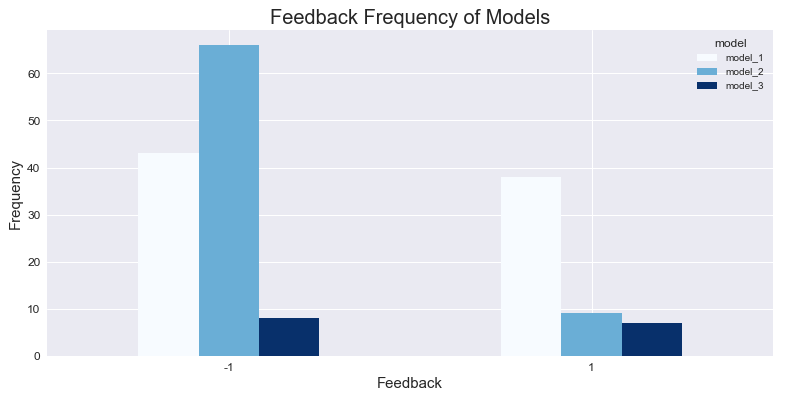I am implementing a recommendation engine tool used by several users who are supplying feedback in the form of thumbs up (+1) or thumbs down (-1) for each recommendation. The recommendation engine uses 3 different models independently to suggest recommendations (i.e each model suggests its own unique recommendations). The feedback data is in a pandas dataframe df shown below.
df.head()
recommendation_id feedback model x1 x2
0978hb34 1 model_1 23 0.89
0khb3459 1 model_2 10 0.67
098uf3n4 -1 model_2 89 0.23
03kjh8ef 1 model_3 16 0.67
... ... ... ... ...
I want to visualize the relationships between feedback and the three features model, x1 and x2. I can't think of a way to do this in a statistically correct / intuitive way; what type of visualization would capture most information in this data set in a correct and intuitive way? I don't mind generating several plots (it doesn't all have to be in one plot), so long as they are easy to understand.
So far what I have done is to create the scatter plots below, but they aren't very aesthetic and don't give much insight.
EDIT: One nice bar-plot visualization I have generated did give useful insight into the 3 models, shown below. It just counts the absolute number of times feedback was given for each model.




x1andx2represent, but yes they are both continuous and with ranges [10,160] and [0,1] respectively. The goal of the visualization would be to understand how each model is performing with respect to featuresx1andx2. $\endgroup$